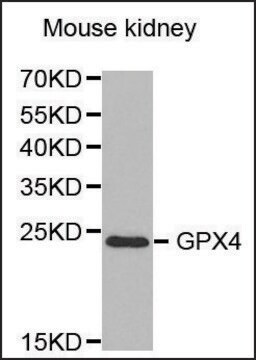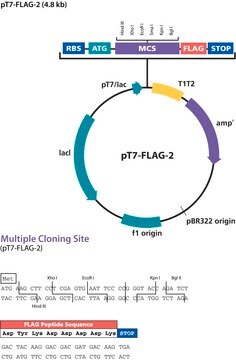OGS568
PSF-CMV-MUKAPPA - MOUSE KAPPA LIGHT CHAIN ANTIBODY PLASMID
plasmid vector for molecular cloning
Synonym(s):
cloning vector, expression vector, molecular cloning vector, plasmid, plasmid vector, snapfast vector, vector
About This Item
Recommended Products
form
buffered aqueous solution
mol wt
size 4576 bp
bacteria selection
kanamycin
Origin of replication
pUC (500 copies)
Peptide cleavage
no cleavage
Promoter
Promoter name: CMV
Promoter activity: constitutive
Promoter type: mammalian
reporter gene
none
shipped in
ambient
storage temp.
−20°C
General description
Promoter Expression Level: This plasmid contains the mammalian CMV promoter to drive gene expression. We have tested all of our mammalian promoters in a range of cell types and CMV is consistently the strongest in those we have studied. However there are many reports of the CMV promoter demonstrating silencing by methylation in long-term culture.
Application
To enable this immediately upstream of the constant region coding sequence there is a BseRI restriction site. This is a type-IIS restriction enzyme that binds in one position (CAGCAG) and then cleaves a specific number of nucleotides away from the binding site regardless of the sequence at the cleavage point. We use this site in all of our antibody expression cassettes in the same position. In this plasmid cutting with BseRI will result in an overhang consisting of the first two nucleotides of the first codon of the constant region. This means that any variable region with the same overhang at its 3 prime end can be ligated into this plasmid when used in conjunction with any 5 prime site (NotI-NcoI). To add this overhang the variable region must be PCR amplified to contain any of the following sites at its 3 prime end: BseRI BsgI BtsI or BsrDI. By using this system it allows antibody variable regions to PCR amplified and fused to any of our constant region plasmids without having to re-synthesise the entire antibody expression cassette each time.
Sequence
Analysis Note
related product
Storage Class Code
12 - Non Combustible Liquids
Flash Point(F)
Not applicable
Flash Point(C)
Not applicable
Choose from one of the most recent versions:
Certificates of Analysis (COA)
It looks like we've run into a problem, but you can still download Certificates of Analysis from our Documents section.
If you need assistance, please contact Customer Support.
Already Own This Product?
Find documentation for the products that you have recently purchased in the Document Library.
Our team of scientists has experience in all areas of research including Life Science, Material Science, Chemical Synthesis, Chromatography, Analytical and many others.
Contact Technical Service






